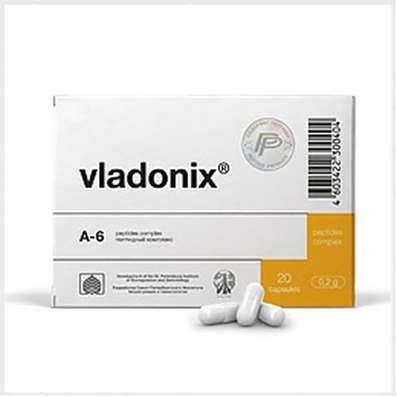Instruction for use: Droperidol
I want this, give me price
Dosage form: Substance powder
Active substance: Droperidol *
ATX
N05AD08 Droperidol
Pharmacological group:
Neuroleptics
The nosological classification (ICD-10)
R45.1 Anxiety and agitation: Agitation; Anxiety; Explosive excitability; Internal stimulation; Excitability; Excitation; Excitation acute; Psychomotor agitation; Hyperexcitability; Motor excitement; Cessation of psychomotor agitation; Nervous excitement; Restlessness; Night trouble; Acute stage of schizophrenia with agitation; Acute mental agitation; Paroxysm of excitation; Overexcitation; Increased excitability; Increased nervous excitability; Increased emotional and cardiac excitability; Increased agitation; Mental arousal; Psychomotor agitation; Psychomotor agitation in psychoses; Psychomotor agitation of an epileptic nature; Psychomotor paroxysm; Psychomotor fit; Symptoms of Excitation; Symptoms of psychomotor agitation; The state of agitation; A state of anxiety; Excitation status; A state of heightened concern; The state of psychomotor agitation; Conditions of anxiety; Excitation conditions; The state of excitement in somatic diseases; Excitation level; Feelings of anxiety; Emotional arousal
R52 Pain, not elsewhere classified: Pain syndrome of radicular origin; Pain syndrome of small and medium intensity of different genesis; Pain syndrome after orthopedic surgery; Pain syndrome in superficial pathological processes; Radicular pain in the background of osteochondrosis of the spine; Radicular pain syndrome; Pleural pain; Chronic pain
R57 Shock, not elsewhere classified: Obstructive shock
T79.4 Traumatic shock: Hemorrhagic shock; Crash Syndrome; Posthemorrhagic shock; Postoperative shock; Post-traumatic shock; Post-traumatic shock; Traumatic shock; Syndrome of hemorrhagic shock and encephalopathy
T81.1 Shock during or after the procedure, not elsewhere classified: Operating shock; Postoperative shock; Operational shock
Z100 * CLASS XXII Surgical practice: Abdominal surgery; adenomectomy; Amputation; Coronary angioplasty; Angioplasty of the carotid arteries; Antiseptic skin treatment for wounds; Antiseptic Hand; Appendectomy; atherectomy; Balloon coronary angioplasty; Vaginal hysterectomy; The coronary bypass; Interventions in the vagina and cervix; Interventions on the bladder; Intervention in the mouth; Restoration and reconstructive surgery; Hand hygiene of medical personnel; Gynecologic surgery; Gynecological intervention; Gynecological surgery; Hypovolemic shock during operations; Disinfection of purulent wounds; Disinfection of wounds edges; Diagnostic intervention; Diagnostic procedures; Cervical Diathermocoagulation; Long-surgery; Replacing the fistula catheters; Infection in orthopedic surgery; Artificial heart valve; cystectomy; Short-term outpatient surgery; Short-term operation; Short surgical procedures; Krikotireotomiya; Blood loss during surgery; Bleeding during surgery and in the postoperative period; Kuldotsentez; laser photocoagulation; laser coagulation; retinal laser coagulation; Laparoscopy; Laparoscopy in Gynecology; CSF fistula; Small gynecological operations; Small surgical procedures; Mastectomy and subsequent plastic; mediastinotomy; Microsurgical operations on the ear; Mukogingivalnye operation; suturing; Minor surgery; neurosurgical operation; Immobilization of the eyeball in ophthalmic surgery; testectomy; pancreatectomy; Perikardektomiya; The period of rehabilitation after surgery; The period of convalescence after surgery; Percutaneous transluminal coronary angioplasty; Pleural thoracentesis; Pneumonia postoperative and posttraumatic; Preparation for surgical procedures; Preparation for surgery; Preparation of the surgeon's hands before surgery; Preparation of the colon for surgical procedures; Postoperative aspiration pneumonia in neurosurgical and thoracic surgery; Postoperative nausea; Postoperative bleeding; postoperative granuloma; postoperative shock; The early postoperative period; myocardial revascularization; Radiectomy; gastric Resection; bowel resection; uterine Resection; liver Resection; enterectomy; Resection of part of the stomach; Reocclusion of the operated vessel; Bonding tissues during surgical procedures; Removal of sutures; Condition after eye surgery; Condition after surgery; Condition after surgery in the nasal cavity; Condition after gastrectomy; Status after resection of the small intestine; Condition after tonsillectomy; Condition after removal of the duodenum; Condition after phlebectomy; Vascular surgery; Splenectomy; Sterilization of surgical instruments; Sterilization of surgical instruments; sternotomy; Dental surgery; Dental intervention in periodontal tissues; strumectomy; Tonsillectomy; Thoracic surgery; Thoracic surgery; total gastrectomy; Transdermal intravascular coronary angioplasty; Transurethral resection; Turbinektomiya; Removal of a tooth; cataract surgery; Removal of cysts; tonsillectomy; Removal of fibroids; Removing the mobile primary teeth; Removing polyps; Removing broken tooth; Removal of the uterus body; Removal of sutures; Fistula likvoroprovodyaschih ways; Frontoetmoidogaymorotomiya; Surgical infection; Surgical treatment of chronic limb ulcers; Surgery; The surgery in the anal area; The surgery on the colon; Surgical practice; The surgical procedure; Surgical interventions; Surgery on the gastrointestinal tract; Surgical procedures on the urinary tract; Surgical procedures on the urinary system; Surgical intervention of the genitourinary system; Surgical procedures on the heart; Surgical manipulation; surgery; Surgery on the veins; Surgical intervention; Vascular surgery; Surgical treatment of thrombosis; Surgery; cholecystectomy; Partial gastric resection; hysterectomy; Percutaneous transluminal coronary angioplasty; Percutaneous transluminal angioplasty; Coronary artery bypass; tooth Extirpation; Extirpation of milk teeth; pulpectomy; pulsative cardiopulmonary bypass; tooth Extraction; teeth Extraction; cataract extraction; Electrocoagulation; endourological intervention; episiotomy; Etmoidotomiya; Complications after tooth extraction
Composition and release form
Solution for injection 10 ml
droperidol 25 mg
in bottles of 10 ml; in a box of 50 bottles.
Pharmachologic effect
Pharmacological action - antishock, neuroleptic, antiemetic.
It blocks central dopamine receptors, alpha-adrenoreceptors, has cataleptogenic and antiarrhythmic activity, lowers blood pressure.
Pharmacokinetics
For IV and IM administration of Cmax in plasma is achieved after 15 minutes. Binding to plasma proteins is 85-90%. T1 / 2 is an average of 134 minutes. In the form of metabolites excreted by the kidneys (75%), unchanged in the form of urine (1%) and feces (11%).
Indication for the Droperidol
Neuroleptanalgesia, premedication before anesthesia, surgical intervention, instrumental research; psychomotor agitation in the postoperative period; shock, incl. burn; poisoning (as part of complex therapy).
Contraindications
Hypersensitivity, extrapyramidal disorders; surgical interventions in late pregnancy (eg, caesarean section); early childhood (up to 3 years).
Side effects
Arterial hypotension, extrapyramidal disorders.
Interaction
The effect is enhanced by benzodiazepines. Weaken the effect of bromocriptine.
Dosing and Administration
IM, for premedication - 2,5-5 mg for 15-45 minutes before the operation, in the postoperative period - 2.5-5 mg every 6 hours. IV, for an anesthetic - 2.5 mg / 10 kg, for the maintenance of anesthesia 1,25-2,5 mg. Children from 3 years and older in / m for premedication - 0.1 mg / kg.
Storage conditions of the drug Droperidol
In dry, the dark place at a temperature of 20 ° C.
Keep out of the reach of children.
Shelf life of the drug Droperidol
5 years.
Do not use after the expiry date printed on the package.

 Cart
Cart




